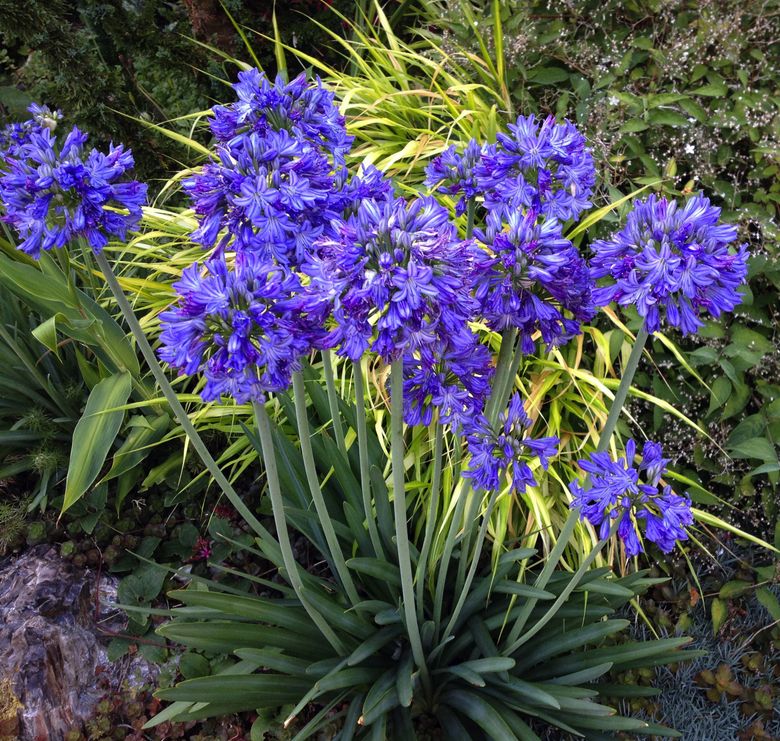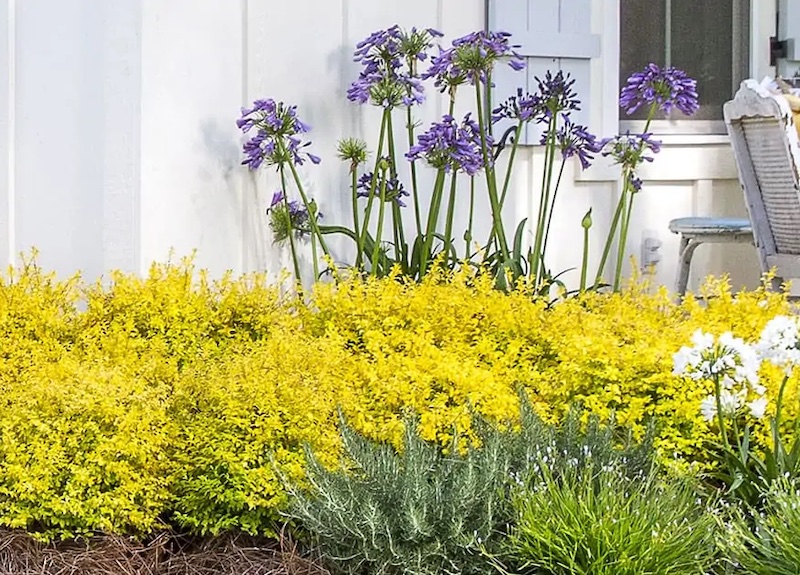Agapanthus Buddy Plant Kingdoms: Perfect Pairings for Your Yard
Agapanthus Buddy Plant Kingdoms: Perfect Pairings for Your Yard
Blog Article
Releasing the Secret to Successful Agapanthus Cultivation: Advice for a Flourishing Yard
In the realm of gardening, cultivating agapanthus successfully requires a critical approach that incorporates different elements of plant treatment. With careful focus to detail, one can unlock the keys to supporting these magnificent flowers, leading to a garden that prospers with elegance and vibrancy. By comprehending the subtleties of agapanthus growing, one can create an environment where these plants grow and grow generously. In the adhering to discussion, we will certainly discover necessary ideas and techniques that will assist you in the direction of a growing agapanthus garden, offering understandings into best techniques, dirt problems, sprinkling techniques, and more.
Growing Agapanthus: Ideal Practices
When growing Agapanthus, correct dirt prep work is necessary for making certain successful growth and development of these attractive flowers. Agapanthus, generally called Lily of the Nile or African lily, thrives in well-draining dirt with a somewhat acidic to neutral pH level - Agapanthus. Prior to planting, it is vital to amend heavy clay dirts with organic issue such as compost or peat moss to boost drainage and supply essential nutrients for the plants
To grow Agapanthus, pick an area that gets complete sunlight to partial shade, as this will certainly advertise healthy development and bountiful blooming. Dig a hole two times the size of the plant's root sphere and place the Agapanthus at the exact same depth it was formerly growing. Delicately backfill the hole with soil, pushing down securely to remove any type of air pockets around the origins.
Water the newly planted Agapanthus extensively and proceed to maintain the dirt equally moist, particularly throughout the plant's energetic growing season. Agapanthus. Using a balanced fertilizer once a month can further support the plant's growth and flowering. By complying with these ideal methods for growing Agapanthus, you can develop a stunning display of these fascinating blossoms in your yard
Perfect Dirt Issues for Agapanthus
For optimum development and flowering success of Agapanthus plants, guaranteeing the soil problems are optimal is critical. Agapanthus prefers dirt that is abundant in nutrients, so integrating a well balanced fertilizer during the expanding season can advertise healthy growth and lively blossoms.

Watering and Feeding Tips
To make sure healthy growth and vibrant blossoms, correct watering and fertilizing techniques are important for successful Agapanthus farming. Agapanthus plants profit from routine watering, particularly during the expanding season.
When it concerns fertilizing Agapanthus, a well balanced fertilizer with equivalent parts nitrogen, phosphorus, and potassium can be applied in the springtime to promote healthy development and flowering. Slow-release fertilizers are excellent click this site for giving nutrients slowly over an extended duration. Prevent over-fertilizing, as this can result in too much foliage growth at the expenditure of flowers.
Additionally, incorporating natural matter like garden compost right into the soil can improve nutrient degrees and boost soil framework, helping in the overall wellness of the Agapanthus plants. By complying with these watering and feeding ideas, gardeners can ensure their Agapanthus plants prosper and create magnificent screens of blossoms.
Pruning and Deadheading Strategies
Proper trimming and deadheading strategies play a critical function in keeping the health and wellness and visual appeals of Agapanthus plants, enhancing the vital techniques of watering and feeding for successful farming. Trimming Agapanthus involves eliminating invested blossom heads, yellowing or dead leaves, and general shaping of the plant to promote far better growth. Deadheading, the process of eliminating discolored flowers, not just enhances the plant's appearance yet additionally encourages further flowering.
When deadheading Agapanthus, it is suggested to clip off the blossom stem at the base using sharp, tidy shears. This procedure reroutes the plant's energy from seed production back into root and foliage growth, promoting a much healthier and extra durable plant. Normal deadheading can expand the blooming duration of Agapanthus and prevent self-seeding, which can result in overcrowding.
In regards to trimming, Agapanthus usually advantages from a light trim after blooming to clean the plant and urge fresh growth. Reducing the spent flower stems and getting visit this page rid of any type of dead or broken vegetation assists preserve the plant's vigor and overall look. Nonetheless, it is important to prevent cutting into the crown of the plant, as this can weaken its wellness.

Protecting Agapanthus From Vermins and Diseases
Executing effective pest and condition administration techniques is crucial to guarding the health and wellness and vitality of Agapanthus plants in growing. Agapanthus are normally hardy plants, however they can still drop target to numerous bugs and diseases if not properly taken care of. One common insect that influences Agapanthus is the Agapanthus borer, a caterpillar that passages right into the plant, causing damages to the leaves and blossoms. To avoid infestations, normal evaluation of the plants is crucial. If borers are discovered, they can be by hand eliminated, or insecticidal soap can be made use of as a control action.
In addition to parasites, Agapanthus are at risk to diseases such as origin rot and fungal fallen leave areas. By staying watchful and addressing pest and illness problems quickly, gardeners can help their Agapanthus prosper and prosper.

Final Thought
To conclude, effective farming of read what he said agapanthus requires appropriate growing techniques, optimal soil problems, sufficient watering and fertilizing, normal trimming and deadheading, and protection from diseases and pests. By following these methods and pointers, garden enthusiasts can ensure a flourishing yard full of beautiful agapanthus flowers. Agapanthus. Remember to preserve regular care and interest to detail to promote the health and longevity of these spectacular plants
When growing Agapanthus, proper dirt prep work is crucial for ensuring effective development and development of these stunning flowers.Water the freshly grown Agapanthus completely and proceed to maintain the dirt uniformly moist, specifically throughout the plant's energetic expanding season.For ideal growth and blooming success of Agapanthus plants, guaranteeing the dirt conditions are suitable is crucial. When hair transplanting or planting Agapanthus, guarantee the dirt is well-prepared to supply the essential structure for the plants to establish themselves effectively. One common pest that affects Agapanthus is the Agapanthus borer, a caterpillar that passages right into the plant, creating damages to the leaves and flowers.
Report this page